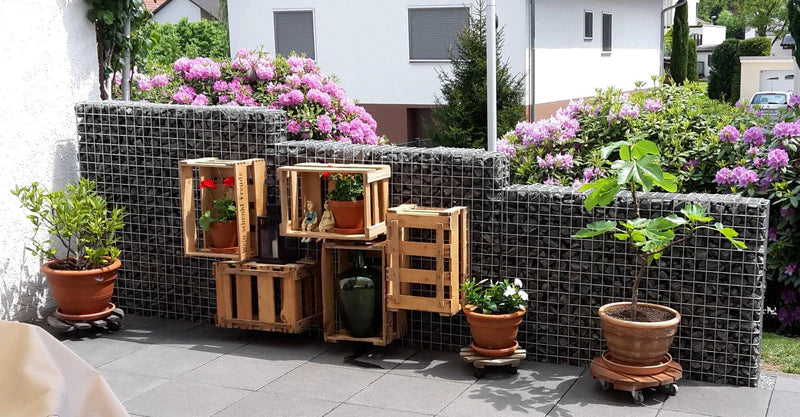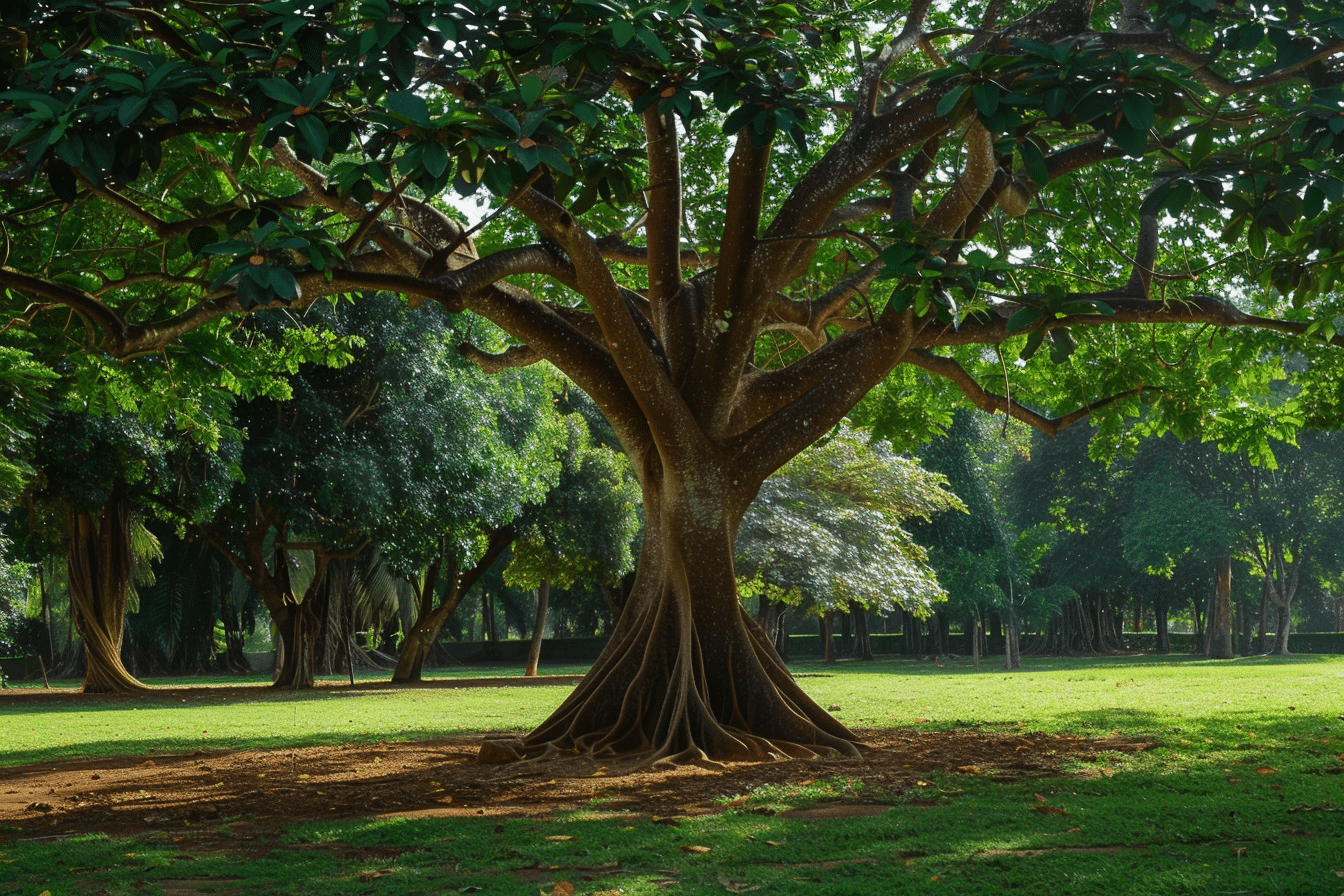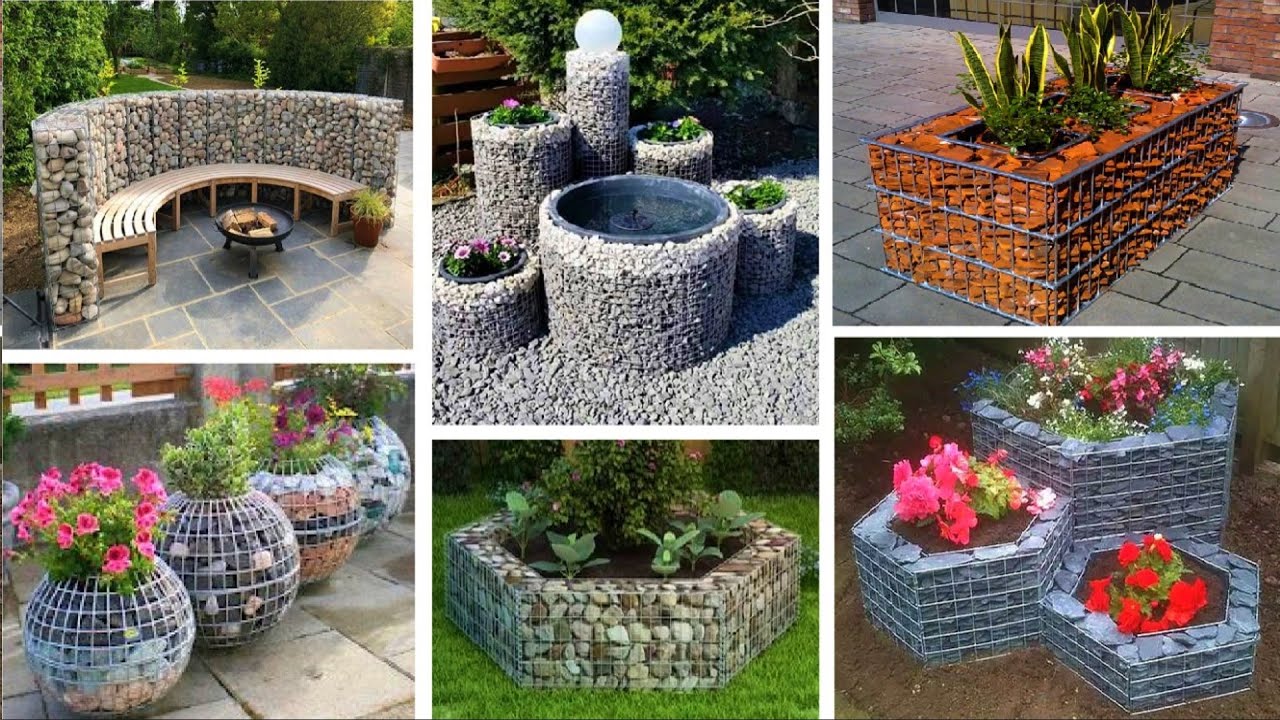Gabions are becoming increasingly popular, whether in gardening and landscaping, for patio design or as decorative elements. They are versatile, robust and aesthetically pleasing. But what do you have to consider when planning and building gabions? Here we have compiled the most frequently asked questions about gabions for you.
1. What are gabions and what are they used for?

Gabions are wire baskets filled with stones and used as walls, privacy screens or to secure slopes. Due to their flexible use and easy installation, they are a popular choice for homeowners looking for a natural yet stable solution for garden design.
2. What preparatory work do I have to do before I build my gabion?
Before you start building, you must ensure that the subsoil is stable. A complete foundation is not always necessary, but the ground should be compacted and level. For additional stability, a garden fleece can be laid under the gabion to prevent grass and weeds from penetrating ( FAQ 5).
3. Do I need tools for assembly?

You do not need any special tools to build spiral gabions . The gabion grids are simply connected by screwing in spirals. Alternatively, you can use the C-ring closure, for which it is best to use special pliers. You can either buy or rent these pliers ( FAQ 1) ( FAQ 2).
4. How do I correctly attach the spacers to the gabion?

The spacers are essential to prevent the gabion walls from bulging. They are hooked into the side grids from front to back, into the internal wires. Make sure that the spacers are evenly distributed over the entire surface. The distance between the holders varies depending on the size of the gabion and can be between 15 cm and 25 cm ( FAQ 7).
5. Why do I need the spacers ?
Spacers help to distribute the weight of the stones evenly across the grids. This prevents the grids from bulging outwards due to the weight of the stones. Approximately 15 spacers are required per square meter of visible surface. The number may vary for larger gabions or custom-made gabions. Note that round gabion columns often do not require spacers ( FAQ 6).
6. How do I fill my gabions correctly?

Filling the gabions requires care to achieve a stable and aesthetic result. Larger stones should be placed in the gabion by hand with the flat side facing the visible surface. Smaller stones can be filled directly into the gabion using a bucket or a KG pipe. It is advisable to hang the spacers before filling and to place wood on the holders to protect them from mechanical stress ( FAQ 8).
7. Which stones are suitable for my gabion?

The choice of the right stone size depends on the mesh size of the gabions. For smaller meshes of 5 x 5 cm, stones with a grain size of 32-56 mm are suitable. For larger meshes of 10 x 10 cm, the stones should be at least 80-120 mm in size. The smaller the grain size, the more evenly the filling of the gabion will be ( FAQ 9).
8. How many tons of stones do I need per cubic meter of gabion?
On average, you will need about 1.7 tons of stones per cubic meter of gabion. However, the exact value can vary depending on the density of the stones and the care taken when filling them. It is important to plan for excess stones, as no guarantee can be given for an exact calculation ( FAQ 10).
9. Do gabions need to be anchored?

Whether a gabion needs to be anchored depends on its size. Gabions that are less than 30 cm deep or higher than 100 cm should be anchored. Galvanized fence posts that are concreted into the ground are suitable for anchoring. Alternatively, post shoes can be used to screw the posts onto existing foundations ( FAQ 4).
10. Can I order my gabion in special sizes?
Yes, almost any special size can be offered within the mesh. However, it must be noted that there must be a wire on the edge of each grid. The specified length always refers to the length of the grid. The finished gabion basket is about one centimeter longer than the specified length ( FAQ 3).
11. How do I close my gabion with C-rings ?

To close the gabions with C-rings, you should pinch a C-ring around the grid every 5 to 10 cm. It is particularly important at the corners that there is a C-ring in each mesh to ensure stability. You can buy or rent our special pliers, which make it easier to set the C-rings , from us ( FAQ 2).
12. What should I pay particular attention to when building my gabion?
In addition to correct anchoring and filling, it is important that the ground is stable and level. If several gabions are arranged one above the other, it is important to ensure that the lower baskets in particular are filled tightly and evenly, as they have to bear the weight of the upper baskets ( FAQ 8) ( FAQ 5).
Conclusion
Gabions are a great way to add a personal touch and stability to your garden or property. With the right preparation, the right stones and a little care when building, you can create a long-lasting and aesthetically pleasing solution. If you have any questions about the individual steps or special requirements, do not hesitate to contact us.




Leave a comment
This site is protected by hCaptcha and the hCaptcha Privacy Policy and Terms of Service apply.